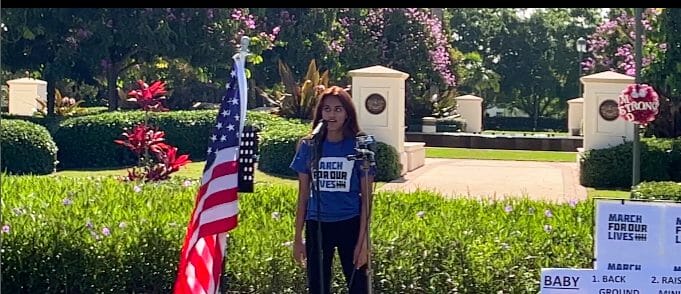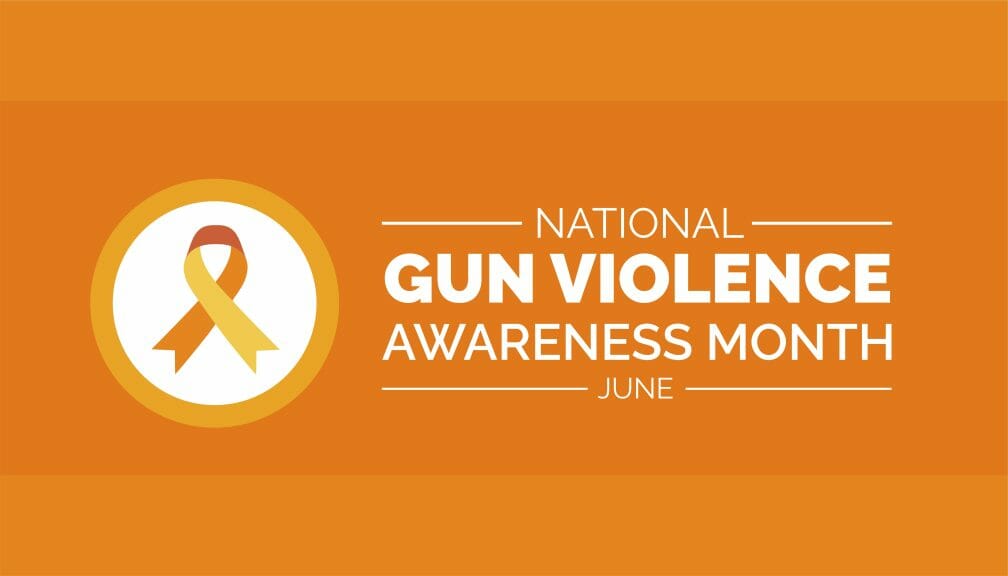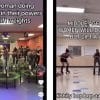Last month was Gun Violence Awareness Month, and while legal change is slow, mass shootings continue to escalate.
This year, 371 mass shootings have plagued the United States.
From private homes to public beaches, there’s the possibility of a shooting. Schools, which typically provide students with education and security, are depressingly common places for violence.
The student perspective
On Feb. 13 this year, three students died and five were injured after a shooting on Michigan State University’s campus. While local police were on a manhunt for the gunman, students spread out across campus, waiting in fear.
One student, Haig Kadian, was preparing a dinner that he was hosting for his friends. As he’s making the garlic bread, his friend gets an MSU text alert.
“MSU Police report shots fired incident occurring on or near the East Lansing campus. Secure-in-Place immediately. Run, Hide, Fight,” the text read.
“We see social media, and we’re like, ‘Oh my God, it’s actually happening,’ Kadian said. “And we start to see and hear all the police cars and ambulances.”
At 8:18 p.m., an armed man killed two students at Berkey Hall, where two-thirds of Kadian’s classes were held. Then the shooter killed a third student at the student union.
Kadian and his friends immediately turned on the police scanners, shut the blinds, switched off the lights and barricaded the door with furniture.
“Seconds later, my mom calls me and says, ‘Did you get the text? What’s happening?’” Kadian said. “And then I hear the person across to me saying, ‘Apparent shooter on or near campus.’ And my mom is yelling in my ear, ‘Get to cover, stay safe,’ in typical Mom fashion.”
Kadian said MSU students often receive texts that aren’t always pertinent to them.
This time was different.
After waiting in a darkened, locked-up apartment for hours, students received an update around midnight. Authorities lifted the shelter-in-place.
“As soon as the shelter-in-place order was lifted at 12:30 a.m., the cars were just filling the streets, whether it be picking up people, or just getting out,” Kadian said.
Students returned to classes on Feb. 20, a week after gun violence occurred.
The university relocated all of Kadian’s classes to Berkey Hall. MSU announced that this closure will continue in the fall. However, the MSU union as the center of campus, is now open to the public.
“There is no perfect time for reopening a space. What we can do, however, is make certain students, faculty and staff have a choice in this process,” the university posted on its website. “We’ve looked at this through a trauma-informed lens and feel the reopening gives individuals the options and flexibility needed for the healing process to continue.”
Out of the 50,000 students at MSU, thousands probably went into the union that day, unaware of the violence that would happen there.
Rallying together
As June was National Gun Violence Awareness Month, organizations from around the country have worked to draw attention to the increasing fear of guns and mass shootings in America. Organizations such as Brady: United Against Gun Violence promoted wearing orange, a bright and demanding color, to advocate for gun control.
The victims of school shootings created another gun violence awareness organization, March for Our Lives.
In 2021, UNC-Chapel Hill student Gowri Abhinanda founded her high school’s chapter of March for Our Lives, a student-led movement in support of gun control legislation.
Abhinanda’s activism sparked after the 2018 school shooting at Marjory Stoneman Douglas High School in Parkland, Florida — only 20 minutes away from her hometown.
She was in eighth grade.
“(The) lack of support and lack of action in the community, it was just really angering, and makes you want to fight and makes you want to do things that could probably create a better future for the youth,” Abhinanda said.
Almost exactly five years after the Parkland shooting, Abhinanda said she feels desensitized to the violence and overall burned out within the movement. After hearing about the MSU shooting, she didn’t immediately feel anything at all.
“That’s kind of the reality of it, because it happens so much,” Abhinanda said. “It’s just another Tuesday, which is just a harrowing and disgusting feeling, to be quite honest.”
Abhinanda said this anger motivates her to continue working in this movement. She doesn’t want to feel desensitized and succumb to helplessness, she said.
Abhinanda’s local chapter, March for Our Lives – Weston, posted videos of student-led speeches for Gun Violence Awareness Month. These speeches followed a series of mass shootings last year and emphasized the feeling of helplessness and numbness.

“We can’t afford to be numb. We can’t afford to be desensitized. And we cannot afford to feel nothing,” Abhinanda emphasized in one of the posted videos.
Activists advocated for further restrictions on assault weapon purchases, the burden on teachers, and gun violence as an intersectional issue.
These are demands that activists still hold today.
“It’s important for students to continue fighting, even though it’s very discouraging,” Abhinanda said. “As long as you continue to fight, the pressure is still on, and there is a likelihood that something will still happen.”
Change today
Just last month, a jury acquitted the Parkland school officer on all counts, including child neglect, after he stayed outside during the mass shooting in Parkland in 2018.
Five years after the 14 students and three staff members died at MSD and the outstanding cases closed, the 1200 building was no longer needed as evidence. As a result, last week some of the MSD victims’ families were able to step foot in the very classrooms where the massacre happened.
With ongoing activism and legislation, these historic incidents of gun violence are still relevant. Students don’t feel safe in schools, parents lose their growing children, and activists are tired of feeling helpless. There have already been 371 deaths after gun violence in just seven months. What will the rest of the year hold?






